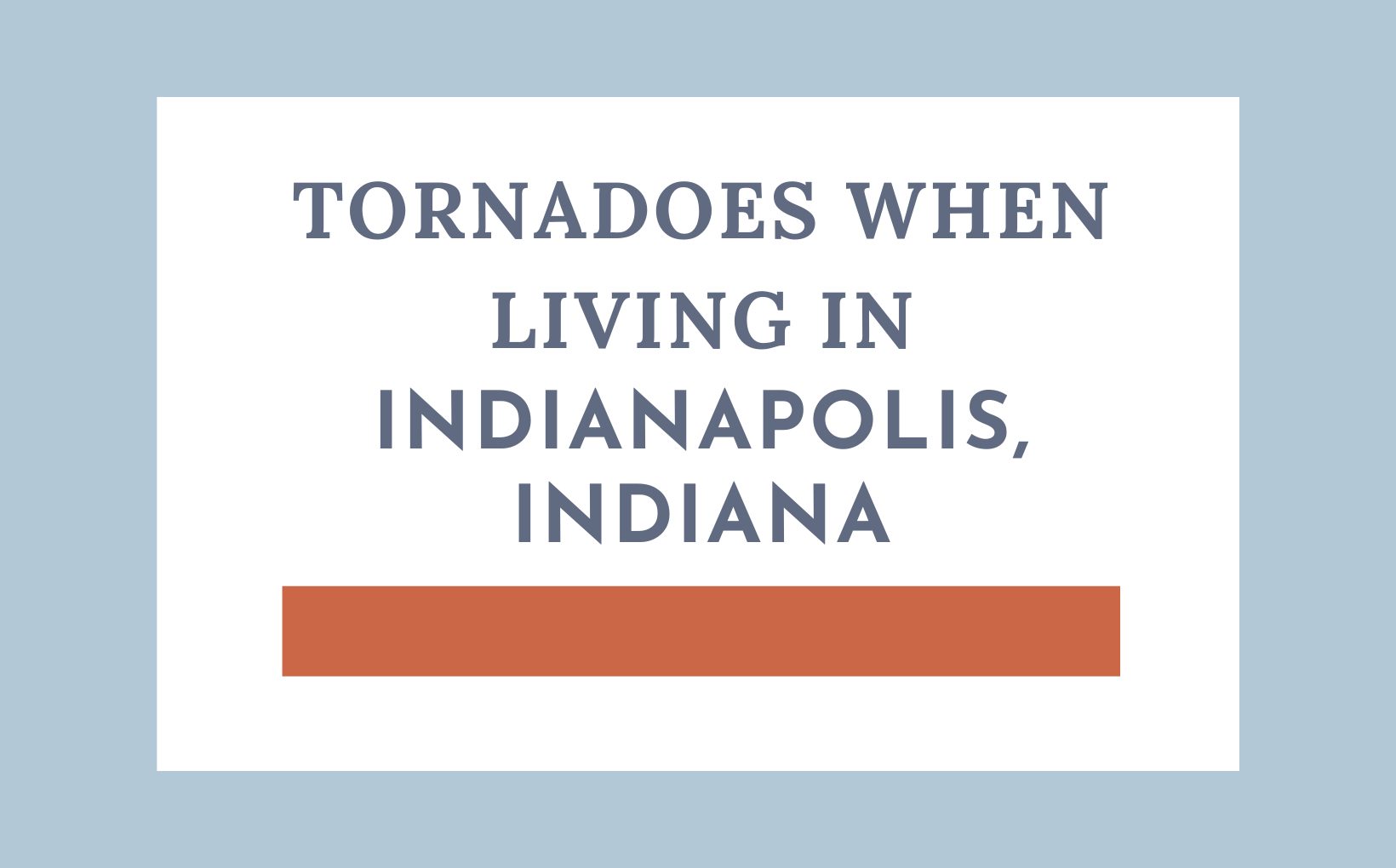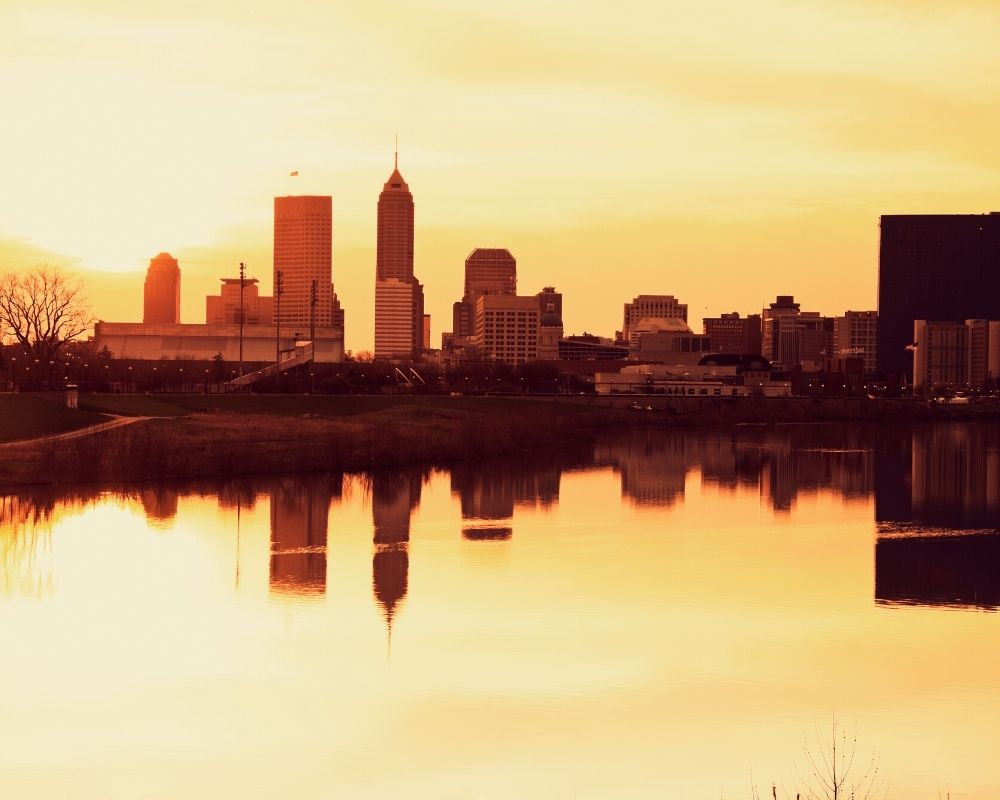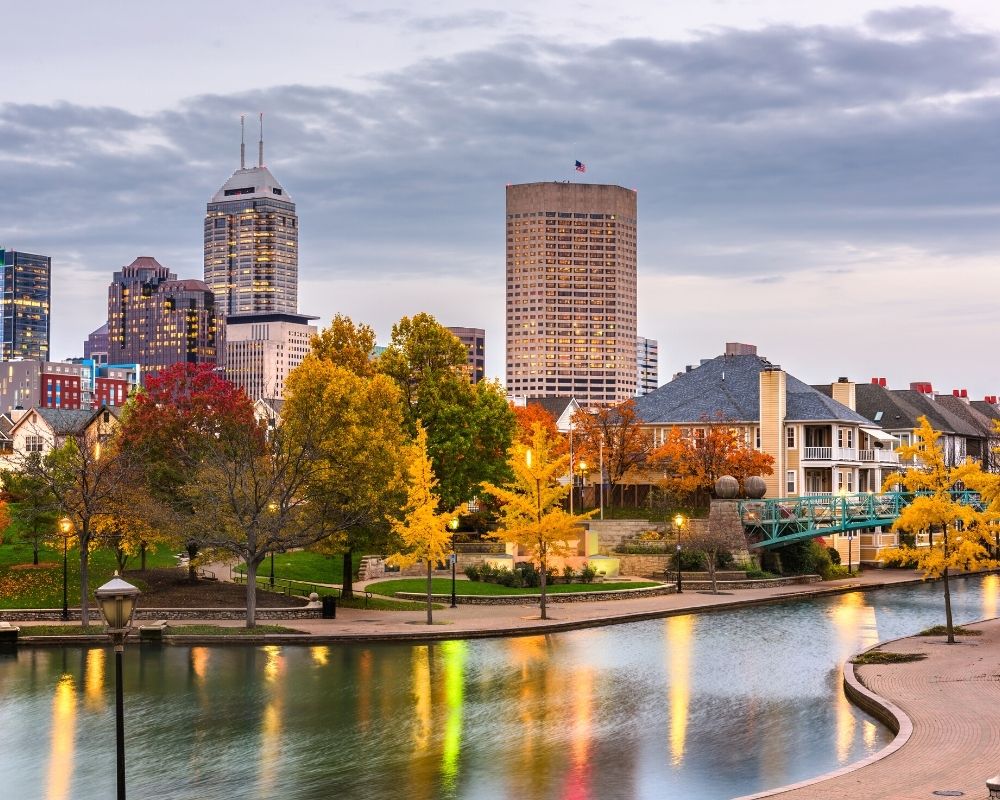Tornadoes when Living in Indianapolis, IN

Natural disasters are an unfortunate part of life in nearly every part of the world. Hurricanes, tsunamis, wildfires, earthquakes, floods, mudslides, and even torrential snow are all commonplace somewhere in the world. In the Midwest, tornadoes take this title. If you are moving to Indianapolis and happen to be more than a little bit fearful of these unwanted visitors, try to relax and learn the facts. Knowing more about them may help to put your mind at ease.
Tornadoes in Indianapolis
If we learned anything from the Wizard of Oz, we know tornadoes are terrifying cyclones full of chickens and old ladies on bicycles. Turns out, that’s actually a pretty uncommon characteristic of a tornado. Luckily, they don’t usually drop houses on people, either. But they do occur, and they are destructive, and they can be deadly.
What is Tornado Alley?
Indiana sits on the eastern border of the part of the United States often referred to as “Tornado Alley.” This stretch of land throughout the central United States gets more tornadoes than anywhere else in the country due to its geography. Wide-open spaces, flat land, and little population density means that the warm air required to create a tornado has plenty of space to move about. While tornadoes certainly do hit cities from time to time, for the most part, they occur in rural areas.

Learn More: Is it safe to live in Indianapolis?
How often will you see a tornado living in Indianapolis?
Indiana gets an average of 22 tornados a year. Yes, this sounds like a lot, but states like Texas, Kansas, and Oklahoma get far more. Illinois, Indiana’s immediate neighbor to the west, gets twice as many tornadoes a year. It’s also important to realize that not every documented tornado is a town-flattening menace. All it takes for a tornado to “count” is for it to touch land, even if just for a few seconds.
A funnel cloud (the adolescent tornado, not yet a full grown-up) can whirl around in the sky for a while, with the apex of its funnel reaching up and down a few times. If it happens to hit the ground once or twice, it’s a tornado. It might dissipate very quickly and be gone as soon as it came, leaving little to no destruction. You likely won’t even see most funnel clouds and tornadoes. You could live your entire life in Indiana and never actually see one. Of course, much like radiation or a merging car in your blind-spot, just because you don’t see them doesn’t mean they aren’t there.

Learn More: What’s winter like in Indianapolis?
Do tornadoes have a season?
Most natural disasters, with perhaps the exception of earthquakes, are also fairly predictable. Wildfires in California are the worst in the fall, after long dry summers. Mudslides tend to occur in the spring, when torrential rains cause the dry ground to oversaturate too quickly. Tornadoes have a tendency to be seasonal, coming with the warm weather of the spring, and being for the most part gone by the summer.
Warm, wet air pushing up from the Gulf of Mexico in the spring moves up through the southern Midwest, and as it reaches the flat prairie of central Indiana, begins to swirl. The wide-open spaces allow this warm air to push upward into the colder, atmospheric air. Because it can get pretty cold in Indianapolis in the winter, this temperature difference in the spring is drastic. The two fronts meet, creating the perfect environment for a tornado.

Learn More: Pros & Cons of Living in Indianapolis
How can I protect myself during a tornado?
If you are moving to Indiana and just can’t get the thought of these daunting devils out of your mind, rest easy knowing there are many ways to stay safe during a tornado. First and foremost, basements are a very safe place to be during a tornado, and many Indiana homes have them. While you won’t likely find a basement in a place like San Francisco, where even the smallest earthquake could crack the foundation, you see plenty in the Hoosier State. The ground and landscape provide the perfect environment for basements and they are relatively affordable to put in.
If you don’t have a home with a basement, or find yourself out and about or in a place of business when a tornado occurs, try to get to the most “internal” foundation possible. Get away from windows that may break. Find the innermost rooms and walls of a building and put your back to the wall, protecting your head and neck if you can. Try to make sure you aren’t in the direct path of anything large that could fall and hit you.
If you happen to be driving don’t attempt to outrun the storm. Pull over and run into a place of business if you can or seek shelter of any kind. Remember that the high winds of a tornado will make every nearby object a hurtling javelin. And you really, really don’t want to be plucked up by a tornado while you are in a car. If your car gets picked up and tossed like a badminton birdie, it’s best you aren’t in it.
You’ll also be notified of impending tornado danger via storm sirens. Not only will you hear the sirens going off when a storm is getting bad, but you will hear them tested much more often than they are actually used. Once a week, at the same time (usually midday, so it isn’t too disruptive) you will hear the storm sirens demonstrating an operational test. This not only reminds citizens the sirens are in working order, but eventually becomes a part of life. For instance, if the sirens go off at 1:00 p.m. on a Friday, you know there are only a few hours left until the weekend!
Looking to call Indianapolis home?
Now that you know tornados really aren’t that bad, are you ready to call Indianapolis home? If so, reach out to me at Compton Realty. I would love to help you find your next home in the Indy Metro Area

